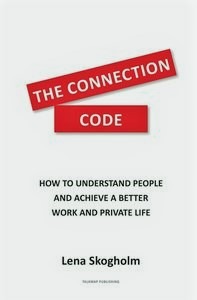

TOP 5 – BEST-SELLING NON-FICTION OF THE YEAR
Have you ever met a negative person who drained your energy? Asked yourself why the negative takes up so much space, or wondered how you can avoid being dragged along and dragged down?
Have you become involved in misunderstandings and been unable to understand quite where it all went wrong? Or heard people say: ‘Come on! Surely we can talk about this like adults!’?
Have you reflected over how best to respond when faced with someone who is deeply upset? Asked yourself what actually makes us humans function as we do? Wondered how we can develop good relationships while avoiding connections and interactions that steal lots of energy?
Keynote speaker Lena Skogholm takes you on an exciting journey of discovery through the fantastic landscape of the brain. You’ll discover explanations for events that may occur in your relationships, together with concrete advice and tools you can use in a range of situations in order to bring about the best outcome for both parties. When we align our interactions with the brain’s biological frameworks, we achieve optimal results – it’s as simple as that!





